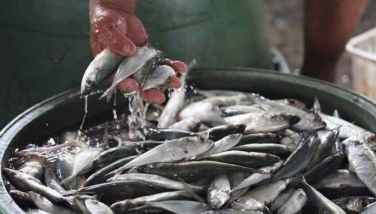DOST sets training for fireworks makers
MALOLOS , Philippines — To help local fireworks manufacturers keep up with technological advancement in the industry, the Department of Science and Technology (DOST) will conduct a five-day training seminar for pyrotechnic makers here.
Angie Parungao, provincial director of DOST in Bulacan, told The STAR that the seminar on the safe manufacturing and regulation for pyrotechnic makers in the Philippines will be held on Jan. 8-12 at the Malolos Resort Club Royale.
It is in line with Executive Order 28 signed by President Duterte in June that provides for the regulation and control of the use of firecrackers and other pyrotechnic devices.
Annabelle Briones, officer-in-charge of the DOST Industrial Technology Development Institute (ITDI), said the seminar aims to upgrade the knowledge and capabilities of pyrotechnics makers on the new technology, safety manufacturing and regulation and awareness on international standards.
“Likewise, this will serve as a venue for identifying opportunities, as well as technological gaps, problems and threats confronting the industry sector. The results of this forum will be an important basis for future courses of action in manufacturing pyrotechnic products (fireworks and firecrackers),” Briones added.
The Pyrotechnic Regulatory Board of Bulacan said that most of the local fireworks manufacturers still use technology long banned in other countries.
Celso Cruz, chairman emeritus of the Philippine Pyrotechnics Manufacturers and Dealers Association, said the current practice of using the mixture of potassium chlorate and sulfur in fireworks results in unstable products usually susceptible to accidental explosions.
Modern methods require the more stable and safer potassium perchlorate to make fireworks but the chemical is more expensive.
Cruz said since the late 1990s, their association has been pushing for modernization of the industry, however, the much cheaper chemical ingredients potassium chlorate and sulfur are still available in the market and thus used by local fireworks manufacturers to cut cost.
Fireworks-related injuries (FWRIs) rose to 429 cases after 23 more people were treated for firecracker injuries in different government hospitals, the Department of Health (DOH) reported yesterday.
DOH’s Epidemiology Bureau said the number of recorded FWRIs from Dec. 21 to Jan. 4 was 437 cases or 50 percent lower than the five-year average and 31 percent less than the recorded figure during the same period in 2016.
There was no fatality and no fireworks ingestion reported.
A majority of the cases were reported in Metro Manila and most of the patients were males with ages ranging from 11 months to 69 years old.
More than half or 235 of the victims were active users while 331 sustained blast injuries without amputation. Seventeen percent suffered eye injuries and four percent had blast injuries with amputation.
Over 50 percent of the cases were caused by illegal fireworks, with piccolo accounting for 33 percent of the figure.
To avoid the potentially deadly tetanus infection, the DOH yesterday urged all those who suffered firecracker-related injuries to seek proper wound management.
Health Secretary Francisco Duque III said even those who sustained minor injuries should consult the nearest health facility because blast wound is closely associated with tetanus infection.
“Tetanus is a highly fatal disease,” Duque warned as he noted that post-exposure prophylaxis against tetanus is standard procedure for those with injuries that break the skin.
The DOH has recorded a decline in number of FWRIs nationwide, but Duque said there might still be some people who who did not seek treatment for their injuries.
– With Mayen Jaymalin
- Latest
- Trending




























